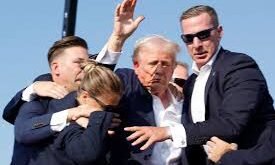In an age where technology and creativity intersect in unprecedented ways, the fusion of artificial intelligence (AI) and art stands out as a transformative phenomenon. This intersection is pushing the boundaries of what is possible in the realms of creativity and innovation, offering new tools, perspectives, and possibilities for artists and technologists alike. As we delve into this fascinating convergence, we’ll explore how AI is revolutionizing artistic innovation, the implications for artists, and the potential future of creative expression.
The Emergence of AI in Artistic Endeavors
AI as a Creative Tool
Artificial intelligence has rapidly evolved from a niche technology to a mainstream tool that is reshaping various industries, including the arts. AI algorithms can now generate paintings, compose music, write poetry, and even design fashion, blurring the lines between human and machine creativity. These advancements are not just novelties; they are powerful tools that artists can leverage to push the boundaries of their craft.
Historic Milestones in AI Art
The journey of AI in the art world is marked by several significant milestones. One of the earliest and most notable examples is the creation of «The Next Rembrandt,» a project where AI analyzed Rembrandt’s entire body of work to generate a new painting in his style. Similarly, AI-generated music has been making waves, with compositions that mimic the styles of classical composers like Bach and Beethoven, as well as contemporary artists. These projects demonstrate AI’s potential to not only replicate but also innovate within established artistic traditions.

How AI is Transforming Artistic Innovation
Enhancing Creative Processes
One of the most profound impacts of AI on art is its ability to enhance the creative process. AI-powered tools can assist artists in various ways, from generating initial ideas and concepts to refining and perfecting final pieces. For instance, AI can analyze vast datasets of existing artworks to identify patterns and trends, offering artists new insights and inspiration. Additionally, machine learning algorithms can automate repetitive tasks, allowing artists to focus more on the conceptual and creative aspects of their work.
Expanding Artistic Possibilities
AI is also expanding the boundaries of what is possible in art. Generative adversarial networks (GANs), for example, can create entirely new images, music, or text by learning from existing data. This capability has led to the emergence of new artistic genres and styles that were previously unimaginable. Artists are using AI to explore abstract concepts, create interactive installations, and develop immersive experiences that engage audiences in novel ways.
The Role of AI in Collaborative Art
Human-AI Collaboration
The relationship between humans and AI in the creative process is increasingly collaborative. Artists and technologists are working together to harness the power of AI, blending human intuition and emotional depth with machine precision and computational power. This collaboration can take many forms, from artists using AI tools to enhance their work to technologists creating AI systems that can interact with and learn from human artists.
Case Studies of Successful Collaborations
Several high-profile collaborations highlight the potential of human-AI partnerships in art. One notable example is the collaboration between artist Refik Anadol and AI, resulting in mesmerizing data-driven installations that transform architectural spaces into immersive environments. Another example is the AI-generated portrait «Edmond de Belamy,» which was created by the Paris-based art collective Obvious and sold at Christie’s auction for $432,500, demonstrating the commercial and artistic value of AI-assisted art.
Challenges and Ethical Considerations
The Debate Over Authorship
The integration of AI in art raises important questions about authorship and ownership. Who owns the rights to an artwork created by an AI system? Is the AI itself an artist, or is the creator of the algorithm the true author? These questions challenge traditional notions of creativity and intellectual property, requiring new legal and ethical frameworks to address them.
Bias and Representation in AI Art
AI systems are only as good as the data they are trained on. If the training data contains biases, the resulting artworks may also reflect these biases, perpetuating stereotypes and inequalities. Ensuring diversity and representation in AI-generated art is crucial to creating inclusive and equitable creative expressions. Artists and technologists must be vigilant about the sources of their data and the potential biases that may arise.
The Impact on Human Artists
Another significant concern is the impact of AI on human artists. While AI can be a powerful tool for enhancing creativity, there is a fear that it may also devalue human artistry or replace human artists altogether. It is essential to view AI not as a competitor but as a collaborator that can augment human creativity and open up new possibilities for artistic expression.
The Future of AI and Artistic Innovation
The Next Frontier of Creativity
As AI technology continues to advance, the future of artistic innovation looks incredibly promising. Emerging technologies such as neural networks, deep learning, and augmented reality (AR) are poised to further revolutionize the art world. Artists will have access to even more sophisticated tools and techniques, enabling them to create works that are more complex, interactive, and engaging.
Embracing the Unknown
The intersection of AI and art is still in its early stages, and much of its potential remains untapped. Embracing the unknown and experimenting with new technologies will be crucial for artists who want to stay at the forefront of innovation. By pushing the boundaries of what is possible, artists can continue to redefine the role of art in society and explore new dimensions of human experience.
Fostering a Collaborative Ecosystem
To fully realize the potential of AI in art, it is essential to foster a collaborative ecosystem that brings together artists, technologists, researchers, and policymakers. By working together, these stakeholders can address the ethical and practical challenges of AI in art, develop new tools and frameworks, and ensure that the benefits of this technological revolution are shared equitably.
 Creative agency information Information about media, marketing y creative
Creative agency information Information about media, marketing y creative



